#The Welsh Life of St David
Text
Doctor Who, but Chronologically 26
It's 1913 and fuck me but this episode fucks like a rabid rhino as it's time for Human Nature.
Holy.
Shit.
And it kind of makes sense! Remember when the Tennant Doctor talked to Jackson Lake? And told him about how Time Lords sometimes store memories in fob watches? And then remember how Tecteun and the Ood had a fob watch they used to be a dick to the Whittaker Doctor? And she was maybe going to open it? Fob watch! We know all about these!!!
So, we start with Tennant and Martha, sprinting into the TARDIS to escape "The Family". These, it transpires, are aliens made of lurid green gas who can possess people, so we're off to a simply fantastic start right there in terms of saving the budget. To escape them the Doctor turns himself human, and gets Martha to basically guard him in The Past because as a human he remembers nothing, which
A) means we are treated to David Tennant's acting changing to being Subtly Wrong, right down to the way he smiles, which is unsettling as fuck; and
B) fucking sucks ASS for Martha because she's now a black maid in a posh white English boarding school and this episode is not interested in portraying posh white English boarding schoolers in 1913 as anything other than raging cock-heads who make you glad there's a world war around the corner to wipe two thirds of them out.
Although I say English. That's St Ffagans, that is. With some exteriors up by Llangors. I know my Welsh historical sites.
Anyway, Martha yeets herself bodily up the rankings with this one. She's capable, and clever, and marooned in a fucking awful time as a bodyguard for a man who doesn't remember her and treats her like shit, and she is so achingly alone. She's stored the TARDIS in a shed, and she goes to it for some normalcy, and to dream of going home. She's made friends with Jenny, another maid, and their friendship is sweet and wholesome, the only bright spot left, and the whole thing would make you weep if only, um, Freema's acting was good.
(I'm sorry I adore her but she is just... very hammy)
So it's very depressing when Jenny becomes an alien host.
BUT it's also an AMAZING SCENE, because Martha has managed to source some afternoon tea for them to share, and Jenny comes in and is Weird, and Martha doesn't just notice - in a move that had me going "Well THIS scene was written by a Welshman," she looks Jenny in the eye and says "Okay, shall I put some gravy in the teapot? We could have jam and herring." And Jenny falls for it just as a changeling would, and Martha gets the fuck out. Incredible. Martha for the win. Everyone should know their changeling lore. Martha clearly does. Good girl.
Although shout out to the Family actually; the Daughter is a little girl with a red balloon and the same nursery rhyme backing track as the sinister little girl with the red balloon in Remembrance of the Daleks who turned out to be possessed by a Dalek or some shit, which is very cool, although these little girls with red balloons and sinister nursery rhyme backing tracks are about as good at acting as each other, which is to say, not really. BUT the Son is played by what's his tits off of Game of Thrones, you know the one? Played the little blond inbred lad who loved dragons. He's fantastic in this! Plays it with just the right amount of menace and charm, it's great. It could easily have become hammy and undermined it, but it's just great. Who knew you could sniff in a frightening manner and make your eyes glow with the Power of Acting alone?
Um, what else, what else... oh yeah, the Doctor as a human is a trembling virgin who gets a girlfriend played by Jessica Hynes. He falls down some stairs because he's so flustered about asking her to a dance. He literally starts saying "Um, I've never..." before kissing her, as though that's at all news to anyone watching.
Anyway, plot-wise, the Doctor dreams of his real life and has written it all down in a dream journal, which he insists on explaining to every woman who looks his way with the tediousness of people who keep dream journals everywhere. He keeps the fob watch on the mantlepiece. He has left a list of instructions for Martha, of which number 23 is to open the watch as a last resort.
But, one of the students in the boarding school is that kid from Love, Actually who later was an American chess player in the Queen's Gambit (side note, I swear like half the cast in the Queen's Gambit was British and putting on lacklustre American accents). Turns out this kid is Mildly Psychic in the way that people often are in RTD's era because why the fuck not, and so he has, in fact, stolen the fob watch because it spoke to him. Occasionally he opens it and learns about Time Lords, but that means the Family can smell the Doctor. This means Martha tries to open the watch, only to find it missing.
So they all go to the dance, which is in the old Oakdale Working Men's Club, and my dad used to go drinking there. It's in St Ffagans now. They're moving the Vulcan there just next door which is fun, because I used to go drinking in the Vulcan, so it'll be two generations of us moved to a museum. I've forgotten what I was talking about.
So they all go to the dance. Unfortunately, this includes the Family, who are armed with a heady mix of alien guns and extraneous scarecrows. In a cliffhanger that lets down the rest of the episode, they grab Martha and Jessica Hynes, and tell a very confused Doctor that he has to change back from human or pick which of these women to kill. It feels a bit needlessly stapled on, tbh. But it's nice to see Oakdale Workies again.
Anyway I think no new questions? Other than "How will they get out of this?" but the second half is next even on this batshit watch order, so we can ignore that one. That's fun. However we do still have a fob watch hanging plot thread for Whitaker, so there's that.
The list!
“She” (an unknown person) is returning (perhaps River returned as Missy. Maybe Me? Maybe Clara???!)
There is something on Donna’s back
An entire planet, Pyrovilia, just… disappeared, somehow. (Maybe because the TARDIS is exploding??? Saturnine was also lost, and that WAS because of the TARDIS exploding. The lion man’s planet was also lost but he was a bit of a knob about it if I’m honest.)
Amy is maybe dead (she’s not)
The Doctor has been cubed (he’s out, but how?)
River is possibly blown up (unless she’s Missy)
The TARDIS has blown up (It’s fine now. Except it’s sort of melting now because it’s corrupted, but it’s fine again)
The universe appears to have ended (the universe is back again)
The Doctor has employed(?) Nardole (And Nardole was “reassembled???”)
There’s a vault in the TARDIS and it contains Missy but we don’t know why (sometimes she knocks for the bants)
What has happened to all these companions and where are the new ones coming from?
There’s an immortal Viking girl now. Her name is Me and she’s now looking after the people the Doctor abandons
What’s With The Silence?
Why was Rory entirely unconcerned by the entire world suddenly going silent when that is Not Normal and should have been, at the very least, extremely disconcerting?
What did the Doctor do to Queen Lizzie One?
Who is Captain Jack Harkness? (Is he the one who gave the companions a warning about the lone cyberman?)
Why is Amy seeing a one-eyed woman in a vanishing window?
What’s with the Doctor’s future involving getting shot by an astronaut?
Is Amy pregnant and why is it inconclusive?
Who is Sarah-Jane Smith?
How is the Doctor Bill’s teacher and why/where does he have an office?
What is going on with the Cyber War and the Cyberium???
Who did the Doctor lose to Cyber Conversion?
What happened with the Other Cyber War?
What happened with the Third War that deleted the void?
Why does Rose seem particularly important?
What’s with the Weeping Angel statues, and why can’t you blink at them?
What order do these Doctors go in? (Eccleston, Tennant, uncertain, Smith, Capaldi.)
Which companion just… forgot the Doctor, and how?
Yaz and Vinder are about to die as Mori/Mwri/Muuri
There is a Lupari shield around Earth.
What’s a Time War?
What’s the Rift?
What’s Bad Wolf?
What happened with Amy’s pregnancy?
In which war did the Doctor become a war criminal, and how?
Who is the Master?
Why has Amy forgotten Rory?
Is Rory plastic or not?
Why is the Doctor sulking on a cloud?
How exactly does the Doctor have a cloud?
What exactly happened with Strax to, uh, tame him?
Which friend killed Strax?
Which friend brought Strax back?
Where did this lesbian lizard and human couple come from?
What happened with Clara as Souffle Girl and the Daleks?
How does Clara actually join?
Why so many Claras?
Why is Missy apparently in robo-heaven?
Why is probably!Missy pushing Clara and the Doctor together?
What is Trensilor and what happened there?
Who is Handles?
The Doctor is about to be dissolved by a beautiful geode man
The universe is being crushed by the Flux
Will the Doctor open the fob watch? (NEW INFO: he also needs to open a fob watch as Tennant, but this presumably won't count.)
Sontarans are invading Earth again
Who is Kate?
Who is Osgood? Another name of Clara’s again?
The fuck is the deal with the Grand Serpent
263 notes
·
View notes
Text
A day in my life -
It's coming up to St David's Day (March 1st).
I am half Welsh, and when I was little my Welsh Mam used to dress me in the Welsh national costume on St David's Day. There are pictures of me in the costume, a long skirt, a white blouse, an apron, shawl and a black felt hat. Pretty much like this:

I wonder where the costume is now - then remember there isn't a hope in hell the hat would fit as I last wore it in the 90s and my head is bigger than my mother's now
I go looking online for adult size Welsh hats.
After some time it seems there is not a single place that makes and sells the traditional wool felt Welsh hats.
This feels very wrong to my historian self, and I start looking for vintage hat blocks and felt.
I am wondering about learning hat making to revive the production of traditional Welsh hats.
I have not, at this point, ever made a formal hat. I do not know how to make a hat, and I have no space or equipment for making hats.
I am still wondering where I might learn to make hats.
6 notes
·
View notes
Text
SAINT OF THE DAY ( March 1)
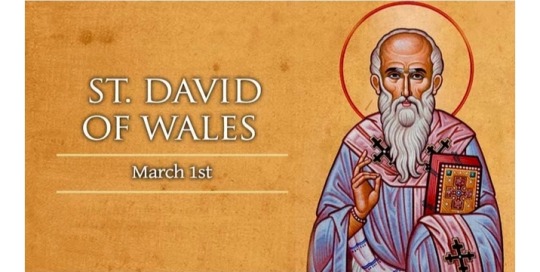
Among Welsh Catholics, as well as those in England, March 1 is the liturgical celebration of Saint David of Wales.
St. David is the patron of the Welsh people, remembered as a missionary bishop and the founder of many monasteries during the sixth century.
David was a popular namesake for churches in Wales prior to the Anglican schism, and his feast day is still an important religious and civic observance.
Although Pope Benedict XVI did not visit Wales during his 2010 trip to the UK, he blessed a mosaic icon of its patron and delivered remarks praising St. David as “one of the great saints of the sixth century, that golden age of saints and missionaries in these isles, and...thus a founder of the Christian culture which lies at the root of modern Europe.”
In his comments, Pope Benedict XVI recalled the saint's dying words to his monastic brethren: “Be joyful, keep the faith, and do the little things.”
He urged that "St. David's message, in all its simplicity and richness, continue to resound in Wales today, drawing the hearts of its people to renewed love for Christ and his Church.”
From a purely historical standpoint, little is known of David’s life, with the earliest biography dating from centuries after his time.
As with some other saints of sixth-century Wales, even the chronology of his life is not easy to ascertain.
David’s conception is said to have occurred as a result of rape – a detail that seems unlikely to have been invented by later biographers, though it cannot (like almost all of the traditions surrounding his life) be established with certainty.
His mother Saint Nonna or Nonnita has her traditional feast day on March 3.
David appears to have been the cousin of his contemporary Saint Teilo, another Welsh bishop and monk.
He is described as a pupil of the monastic educator Saint Paulinus, who was one of St. Teilo’s teachers as well.
There are doubts, however, about the story, which holds that David and Teilo traveled to Jerusalem and were ordained together as bishops.
It is clear that David served as the Bishop of Menevia, an important port city linking Wales and Ireland in his time.
His leading role in two local councils of the Church is also a matter of record.
Twelve monasteries have their founding ascribed to David, who developed a reputation for strict asceticism.
His monks modeled their lives on the earliest desert hermits – combining hard manual labor, silence, long hours of prayer, and a diet that completely excluded meat and alcohol.
The monks did not use animals to take care of their fields. They relied only on bread, vegetables, and water.
One tradition places his death in the year 601, but other writers believe he died in the 540s.
David may well have survived to an advanced age, but evidence is lacking for the claim (made by his 11th-century biographer) that he lived to the age of 147.
Pope Callistus II canonized St. David of Wales in 1120.
5 notes
·
View notes
Text
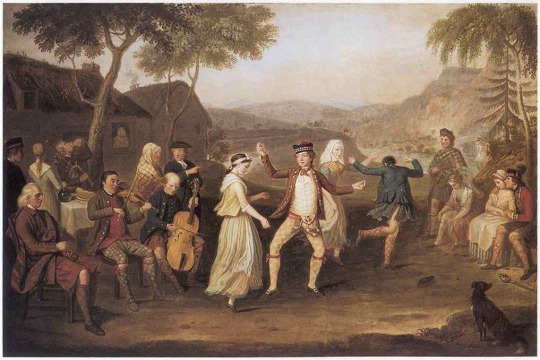
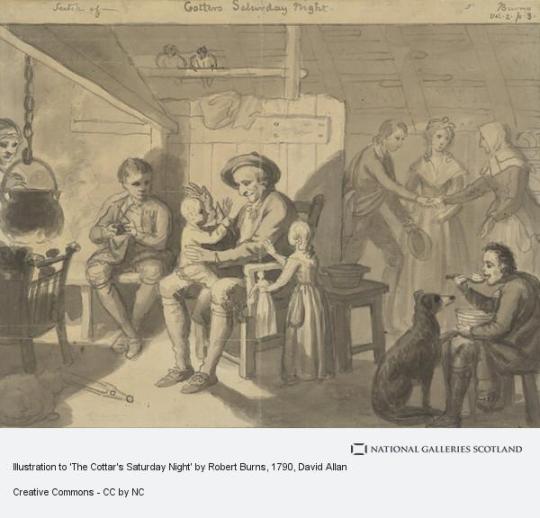
On August 6th 1796 Scottish artist, David Allan, died.
David Allan was born in 1744 in Alloa, Scotland, and earned himself the nickname Hogarth of Scotland.His studies began at the Glasgow Academy, where he was taught by the printers Robert and Andrew Fonlis. At the age of twenty, he travelled south to Italy and continued his education at the Academy of St. Luc in Rome.
Having spent almost fourteen years in Italy, where he painted landscapes in the style of Poussin, he moved to London in 1777 and established himself in London as a portrait painter. In 1780 he moved permanently to Edinburgh, where he was made master of the Academy six years later.Many of his portraits can be found today in museums in London and Edinburgh and a self-portrait of Allen hangs in the Scottish National Gallery."
Some of Allan's best work is Scottish themed, like Highland Wedding, he also collaborated with Rabbie Burns, through his publisher George Thomson, his oval prints went down well with the poet who was to comment that he was:
"highly delighted with Mr Allan’s etchings […] The expression of the figures conformidable to the story in the ballad is absolutely faultless perfection."
Although the two never met correspondence between the three involved with the artwork tells of an admiration between the poet and the artist.
Burns died on 21st July, and was closely followed by Allan, on 6th August 1796.
Allan is buried in the Old Calton Cemetery, Edinburgh, not far from the grave of David Hume. By his wife, Shirley Welsh, herself a keen art student, and a great admirer of her husband's work, he had five children only one of whom, Barbara, reached adult life.
7 notes
·
View notes
Text
dydd gwyl dewi hapus!
in honour of dydd gwyl dewi/st david's day, i wish to share this banger with you all that i used to sing all the time every year! it's called "Mis Mawrth Unwaith Eto" which means "March the first again"
the lyrics are under the cut! (both welsh and english translation with annotations!)
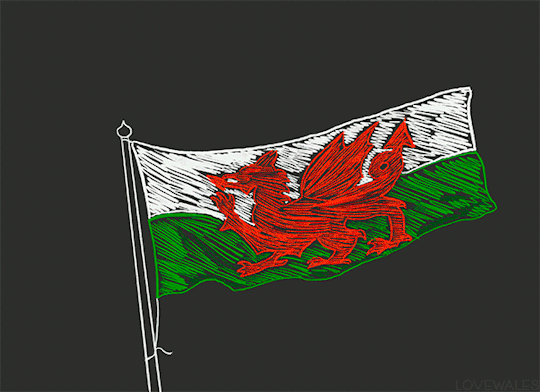
Cymraeg:
"Mis Mawrth unwaith eto*, a'r gwanwyn wedi dod;
Dydd Gwyl Dewi ydw hi.
Mis Mawrth unwaith eto, a'r gwanwyn wedi dod;
Dydd Gwyl Dewi ydw hi.
Dewi Sant, Dewi Sant, cofiwn Dewi,
Cofiwn am y pethau bach a'r pethau mawr**.
Dewi Sant, Dewi Sant, ffrind y bobl, ffrind y plant,
Rhaid i ninnau fod fel Dewi'n dda bob awr***."
English translation: (by me, pls correct me if i'm wrong!)
"March the first is here again*, and spring has come;
It's St. David's Day.
March the first is here again, and spring has come;
It's St. David's Day.
Saint David, Saint David, we remember David,
We remember the little things and the great things**.
Saint David, Saint David, friend of the people, friend of the children,
We should all be good like David all the time***."
*Dydd Gwyl Dewi/St. David's Day is celebrated on March 1st every year!
**This is in reference to Dewi Sant's most famous quote: "Gwenwch y pethau bychain mewn bywyd."/"Do the little things in life."
***Literally 'bob awr' means 'every hour'.
#happy st david's day!#dydd gwyl dewi hapus!#cymraeg#cymru#cymblr#wales#welsh#st david's day#dydd gwyl dewi#welsh music#cerddoriaeth gymraeg#escxelle#elle's interests hyperfixiations and shenanigans#Spotify
3 notes
·
View notes
Text
Today, the Church remembers St. David of Wales.
Ora pro nobis.
Saint David (Welsh: Dewi Sant, c. AD 500 – c. 589) was a Welsh bishop of Mynyw (now St Davids) during the 6th century AD. He is the patron saint of Wales. David was a native of Wales, and a relatively large amount of information is known about his life. However, his birth date is uncertain: suggestions range from 462 to 512. He is traditionally believed to be the son of Saint Non and the grandson of Ceredig ap Cunedda, king of Ceredigion. The Welsh annals placed his death AD 569 years after the birth of Christ, but Phillimore's dating revised this to AD 601.
Many of the traditional tales about David are found in the Buchedd Dewi ("Life of David"), a hagiography written by Rhygyfarch in the late 11th century AD. Rhygyfarch claimed it was based on documents found in the cathedral archives. Modern historians are sceptical of some of its claims: one of Rhygyfarch's aims was to establish some independence for the Welsh church, which had refused the Roman rite until the 8th c. AD and now sought a metropolitan status equal to that of Canterbury. (This may apply to the supposed pilgrimage to Jerusalem where he is said to have been anointed as an archbishop by the patriarch).
The tradition that he was born at Henfynyw (Vetus-Menevia) in Ceredigion is not improbable. He became renowned as a teacher and preacher, founding monastic settlements and churches in Wales, Dumnonia, and Brittany. St David's Cathedral stands on the site of the monastery he founded in the Glyn Rhosyn valley of Pembrokeshire. Around AD 550, he attended the Synod of Brefi, where his eloquence in opposing Pelagianism caused his fellow monks to elect him primate of the region. As such he presided over the synod of Caerleon (the "Synod of Victory") around 569 AD.
His best-known miracle is said to have taken place when he was preaching in the middle of a large crowd at the Synod of Brefi: the village of Llanddewi Brefi stands on the spot where the ground on which he stood is reputed to have risen up to form a small hill. A white dove, which became his emblem, was seen settling on his shoulder. David is said to have denounced Pelagianism during this incident and he was declared archbishop by popular acclaim according to Rhygyfarch, bringing about the retirement of Dubricius. St David's metropolitan status as an archbishopric was later supported by Bernard, Bishop of St David's, Geoffrey of Monmouth and Gerald of Wales.
The Monastic Rule of David prescribed that monks had to pull the plough themselves without draught animals, must drink only water and eat only bread with salt and herbs, and spend the evenings in prayer, reading and writing. No personal possessions were allowed: even to say "my book" was considered an offence. He lived a simple life and practised asceticism, teaching his followers to refrain from eating meat and drinking beer.
Rhigyfarch counted Glastonbury Abbey among the churches David founded. Around forty years later William of Malmesbury, believing the Abbey older, said that David visited Glastonbury only to rededicate the Abbey and to donate a travelling altar including a great sapphire. He had a vision of Jesus who said that "the church had been dedicated long ago by Himself in honour of His Mother, and it was not seemly that it should be re-dedicated by human hands". So David instead commissioned an extension to be built to the abbey, east of the Old Church. (The dimensions of this extension given by William were verified archaeologically in 1921). One manuscript indicates that a sapphire altar was among the items Henry VIII of England confiscated from the abbey during the Dissolution of the Monasteries a thousand years later.
Though the exact date of his death is not certain, tradition holds that it was on 1 March, which is the date now marked as Saint David's Day. The two most common years given for his death are 601 and 589 AD. The monastery is said to have been "filled with angels as Christ received his soul." His last words to his followers were in a sermon on the previous Sunday. The Welsh Life of St David gives these as, "Arglwydi, vrodyr, a chwioryd, Bydwch lawen a chedwch ych ffyd a'ch cret, a gwnewch y petheu bychein a glywyssawch ac a welsawch gennyf i. A mynheu a gerdaf y fford yd aeth an tadeu idi", which translates as, "Lords, brothers and sisters, Be joyful, and keep your faith and your creed, and do the little things that you have seen me do and heard about. And as for me, I will walk the path that our fathers have trod before us." "Do ye the little things in life" ("Gwnewch y pethau bychain mewn bywyd") is today a very well known phrase in Welsh. The same passage states that he died on a Tuesday, from which attempts have been made to calculate the year of his death.
David was buried at St David's Cathedral at St. Davids, Pembrokeshire, where his shrine was a popular place of pilgrimage throughout the Middle Ages. During the 10th and 11th centuries AD the Cathedral was regularly raided by Vikings, who removed the shrine from the church and stripped off the precious metal adornments. In AD 1275 a new shrine was constructed, the ruined base of which remains to this day, which was originally surmounted by an ornamental wooden canopy with murals of David, Patrick and Denis. The relics of David and Justinian of Ramsey Island were kept in a portable casket on the stone base of the shrine. It was at this shrine that Edward I came to pray in AD 1284. During the reformation Bishop Barlow (AD 1536–48), a staunch Protestant, sacrilegiously stripped the shrine of its jewels and confiscated the relics of David and Justinian.
Almighty God, you called your servant David to be a faithful and wise steward of your mysteries for the people of Wales: Mercifully grant that, following his purity of life and zeal for the Gospel of Christ, we may with him receive our heavenly reward; through Jesus Christ our Lord, who lives and reigns with you and the Holy Spirit, one God, forever and ever.
Amen.

#father troy beecham#christianity#jesus#saints#god#salvation#peace#faith#early church#monasticism#Celtic Christianity
7 notes
·
View notes
Text
Today in Christian History
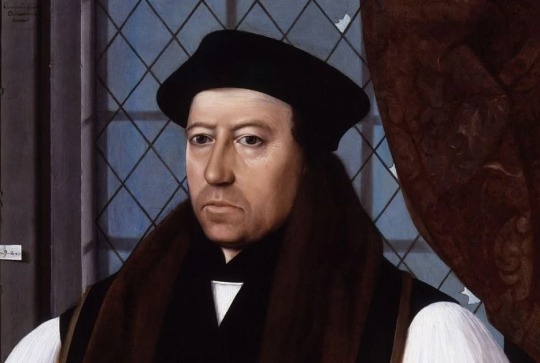
Today is Thursday, March 30th, the 89th day of 2023. There are 276 days left in the year.
Today’s Highlight in History:
606: (Probable date) Death on Mount Sinai of John Climacus, an Eastern hermit, author, and abbot. He had authored the popular book Scala Paradisi (The Ladder of Divine Ascent). Twelve centuries later, Danish philosopher-theologian Søren Kierkegaard, writing under the pseudonyms Climacus and Anti-Climacus, will parody this work, loathing any suggestion that humans can ascend to the divine under their own power.
794: Repose (death) of Stephen of Mar Saba, who had been something of a hermit and counseled compassion for nature. The Orthodox Church will recognize him as a saint.
1533: Thomas Cranmer is consecrated Archbishop of Canterbury.
1555: Bishop Ferrar is burned at St. David’s at Carmarthen, the chief town of his former diocese, condemned for violating his vow of chastity. After preaching against Roman Church forms he had been imprisoned by Mary and refused to be reconciled with Rome, saying that he had taken an oath both to Henry VIII and Edward VI never to admit the papal supremacy.
1735: The impious Howell Harris changes course, becoming a leading Welsh revivalist.
1771: Repose (Death) of Bishop Sophronius of Irkutsk, who will be recognized by the Orthodox Church as a saint because of his personal asceticism, wise counsel, championship of women’s rights, and labors to uplift the spiritual life of his remote diocese.
1851: Vietnamese Emperor Tú Dúc issues a severe edict against Christianity; it orders drowning for European priests, and says Vietnamese priests must be cut in half, even if they agree to trample the cross underfoot.
1858: Dudley Tyng speaks to a noon rally of five thousand in Philadelphia, taking as his text, “Go now ye that are men and serve the Lord.” He declares that he would rather lose his right arm than fail to deliver God’s message to his listeners. Deeply moved, one thousand men respond to his solemn words. Two weeks later one of his arms is yanked from its socket in an accident, infection will develop, and it will have to be amputated. These measures will not save him and in a few days more he will die. His last words will be “Stand up for Jesus, father, and tell my brethren of the ministry to stand up for Jesus.” This dying exhortation will inspire the hymn “Stand Up, Stand Up for Jesus.”
1876: Death, in California, of James L. Breck, a successful Episcopal frontier missionary and educator.
1899: The steamship Stella strikes some rocks in a fog while sailing to Guernsey. Mary Rogers, a cheerful, kind, and hard-working stewardess, supervises the escape of a large number of women and relinquishes her own lifebelt to the last of them, giving up her place in the lifeboat. Raising her hands to heaven she cries, “Lord, have me!” as the ship sinks beneath her.
1942: Death in Burbank, California, of Anne S. Murphy, author of the hymn “Constantly Abiding.”
2004: Burial of Wilson Rajil Sabiya, a Lutheran defender of Christians and of oppressed tribes. Among his chief opponents were Islamists who sought to incorporate Sharia law into the Nigerian constitution and to control the government, medical, and educational facilities.
#Today in Christian History#March 30#death of James L. Breck#Burial of Wilson Rajil Sabiya#The steamship Stella strikes some rocks in a fog while sailing to Guernsey#Vietnamese Emperor Tú Dúc issues a severe edict against Christianity#Bishop Ferrar is burned at St. David’s at Carmarthen#death of Anne S. Murphy
6 notes
·
View notes
Text
David Crosby has died. This one is tough for me. David was a part of my life since my high school days, when I was a huge fan of The Byrds. The first time I met David, was in RCA Studios in LA. It was 1968, I had taken my first ride on an airplane with Jorma Kaukonen and Jack Casady, from Jefferson Airplane,( I know, I know!) flying from San Francisco, on PSA Airlines, with stewardesses who were all beautiful, and in tight pink miniskirts! Jefferson Airplane were actually considering me as a drummer! Buddy Miles was also on the flight. It was memorable trip for several reasons. First, I was staying with Jorma and he had a bunch of visitors during the day. (Recording sessions, were at night, of course) A couple of notable visitors were Jim Morrison, and Eric Clapton who had brought a cassette of a band he was super exited about. They were called "The Band". We went to the studio and I was just hanging out, with you know, Jefferson Airplane! And after awhile David Crosby walks in the studio wearing the famous green cape, and carrying a guitar. The band finished what they were working on and David breaks out his guitar, and they gather around him as he presents them with a song, called "Triad", that The Byrds didn't want to touch, because of the provocative lyrics; "Why can't we be three?" It was beautiful, haunting, and done in what was turning into the modal tune that would turn out to be a big part of David's sound. It was a heady trip for a teenager. I never made it into the Airplane, but to this day, remain friends with Jorma and Jack. And not too much time later, I was in Santana. All good!
I think it was 1970 I bought my first home in Mill Valley. I believe the price was $62,000! Croz was one of the few LA musicians that was hanging out in Marin County with the Dead, and on Fulton St. in SF with the Airplane. David was living on a houseboat in Sausalito. He loved boats. We ran into each other a few times, and we really connected. We took a liking to each other. We both had an affinity, actually, a passion, for the Welsh Poet, Dylan Thomas. We would read him out loud to each other. "Under Milkwood"..."the sloeback, crowblack, fishing boat bobbing sea". One day I was in Wally Heider Studios in SF, recording "Abraxas" with Santana. Creedence Clearwater was recording there as well. David had booked the big room downstairs, and word was going around how these sessions were becoming rather epic. Neil Young, Jack Casady, Jorma, Grace Slick, Jerry Garcia and other members of the Dead, and oh, Joni Mitchell.
At some point Croz learned we were recording upstairs and came upstairs and asked myself and Gregg Rolie to come downstairs and play. We went down and entered the room, and the strong and pungent smell of really good pot, and incense, combined with the red, dimmed lighting, and Indian fabrics, letting you know that you were in a high class hippy vibe recording room. We played and it was such a different vibe than Santana, of course. It really felt like hippy music to me. It was so open, and cozy, so floaty! It felt strange, to be honest. It was an honor to be playing with these folks, of course. Garcia was always a welcome, uplifting presence.
Later in life, David had a realistic approach to life, knowing that he had escaped death more than several times, and he made the most of, recording some of his best material in his late 70's. He squeezed the most out his artistic life and, just two weeks ago was talking about going back on the road. I saw some of those shows, and the shows with Graham Nash They were all magnificent. Here's to you, my friend, my brother. I'm going smoke a big fat one now in honor of you, while listening to your music.
"DO NOT GO GENTLE INTO THAT GOOD NIGHT.
OLD AGE SHOULD BURN AND RAVE AT CLOSE OF DAY;
RAGE, RAGE, RAGE AGAINST THE DYING OF THE LIGHT.
THOUGH WISE MEN AT THEIR END KNOW DARK IS RIGHT
BECAUSE THEIR WORDS HAD FORKED NO LIGHTENING, THEY
DO NOT GO GENTLE INTO THAT GOOD NIGHT.
2 notes
·
View notes
Text
Many countries around the world have adopted a flower as part of their national emblem, usually chosen for historical or cultural reasons. England, Northern Ireland, Scotland and Wales are represented by the rose, the shamrock, the thistle and the daffodil respectively. Read on to learn about each of these plants, and discover how they earned their patriotic status.
Tudor Rose
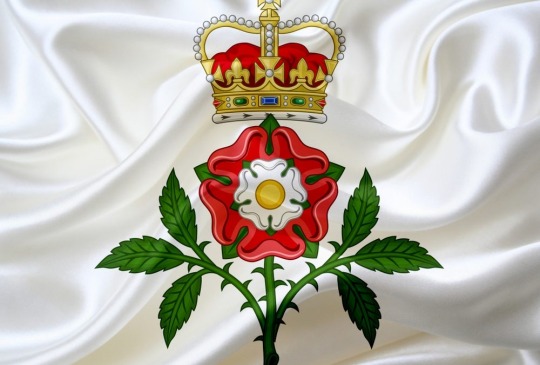
The national flower of England is the rose, but not just any rose. The Tudor rose was adopted by Henry VII as England’s emblem of peace at the end of the War of the Roses, the civil wars between the royal house of Lancashire, who wore a red rose, and the royal house of York, who wore white. The Tudor rose, which combined both, came to symbolise peace between the houses. A red rose is used by sports teams like the England Rugby Union team, while the stylised image of the tudor rose is seen on the dress uniforms of the guards at the Tower of London and in the royal coat of arms.
Scotland Thistle
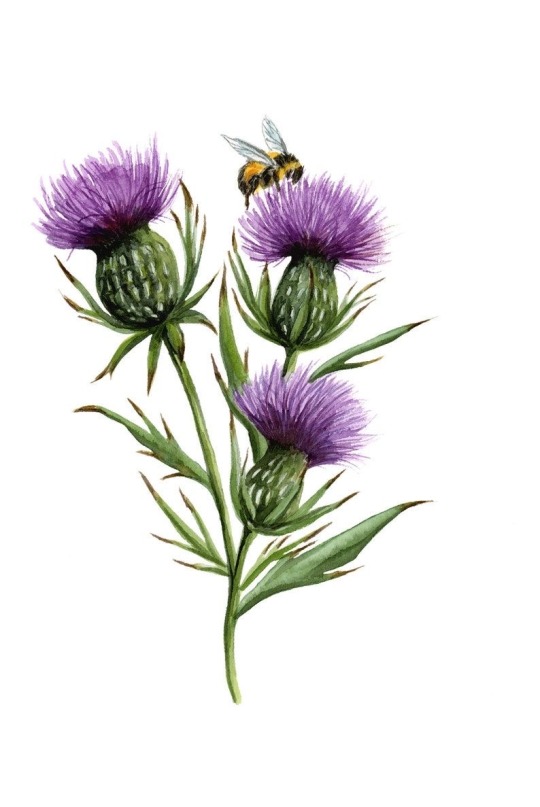
Commonly found in the highlands of Scotland, the thistle is the country’s national flower, but it's not clear how it came to attain this status. One legend has it that a sleeping party of Scottish warriors were spared ambush by a Norse army when a soldier trod on the prickly flower, rousing them with his pained cry. The emblem can be found on the Scottish rugby team, and it's also an important heraldic symbol. Founded by James III in 1687, the Most Ancient and Most Noble Order of the Thistle is awarded to those who have made an outstanding contribution to the life of Scotland.
Wales Daffodil

There is much debate about how the daffodil came to be named the national flower of Wales – but the clue could be in the title. The leek was the traditional emblem of Wales until the 19th-century. The Welsh name for daffodil Cenninen Pedr translates literally as ‘Saint Peter’s Leek’, which may have led to the confusion. It may also be because it blooms in early spring, coinciding with St David’s Day on March 1, when the flower is traditionally worn.
Northern Ireland shamrock

Not to be confused with the lucky charms of the four-leaf clover, the three-leaf shamrock is a registered trademark of the Republic of Ireland, and is also unofficially regarded as the national symbol of Northern Ireland. Its distinctive three-leaf foliage is said to have been used by St. Patrick, the patron saint of Ireland, as a metaphor for the Holy Trinity of the father, the son and the Holy Spirit. Although by no means a showy flower, clover is increasingly a popular addition to wildflower meadow bouquets and arrangements.
Funny how flowers do that. (n.d.). The symbolic blooms of Britain: secrets of our national flowers. [online] Available at: https://www.funnyhowflowersdothat.co.uk/symbolic-blooms-britain-secrets-our-national-flowers.
0 notes
Text
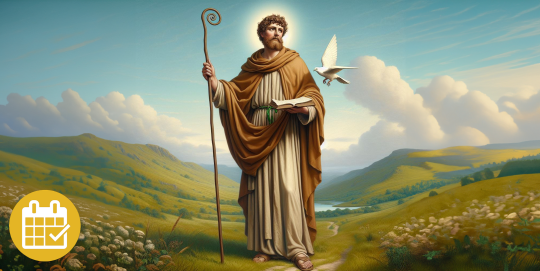
Saint David, the patron saint of Wales, was born in 500 AD and died on this day 59 years later. He was born into a privileged Welsh family but gave it all up to devote his life to the advancement of the message of Jesus Christ. David was a hero among the early Celtic Jesus followers, an indigenous band of radicals who loved God and loved the Gospel. They were a people deeply committed to ensuring everyone they encounter got to hear how much they were loved by their creator.
David was a powerful preacher who founded churches in Britain and then over sea in Brittany. One of the stories suggests he made a pilgrimage to Jerusalem, bringing back a stone from the Holy Lands that now sits in St David’s Cathedral on the site of his original monastery he founded. David was a man who believed in the miracles of Jesus and in his promise that Christians would do similar and even greater things. He frequently saw the sick healed and witnessed miracles over the laws of nature.
On one occasion while speaking to a vast crowed in Llanddewi Brefi, people at the back complained they could not hear him. As David prayed, the ground he was standing on rose to form a hill! Throughout his relatively short life, Wales’ patron saint helped to found well over 1,000 monasteries that became powerful sending bases for the message of Jesus and his rescuing power for all people everywhere. Many of those establishments were built in the remote places where the followers of Jesus felt closer to God’s creation and could experience the wild wind of his presence. These are David’s final words to his people, translated into modern English “Brothers and sisters, be constant and single-minded. Continue to the very end with the mission we have started for Jesus”
0 notes
Note
Sorry I was reading through the replies on that Deaf post and I saw you'd written this: "it's a university known for its pastoral care. Fully abled students are actually in a minority here." I... how? Where is this university?? As someone who had to drop out of university because my needs were unmet, that just sounds unreal. How has that even happened??
Okay this answer could get very boring very quickly so I will do my very best to keep it brief and succinct, like my patience
TL;DR: we sit in the middle of an odd Venn diagram of factors that just mean we are more attractive to disabled students (certainly more attainable in a lot of cases), and the university is increasingly trying to lean into that.
Longer answer under the cut:
I suppose it's a perfect storm of a few factors. Necessary bureaucratic background: Higher Education in Wales went through a phase about 10-15 years ago where the various Education Ministers of the day, in a fit of mid-life crisis, decided there were too many universities and they needed to be streamlined by merging with each other (WHY, CARWYN), which had... uh, mixed results. Some good, some bad. But! It didn't affect every Welsh university. The bigger more prestigious ones, older and fancier of name, avoided the mergers, and in many cases struck out on their own away from umbrella institutions (Aberystwyth, Bangor, Cardiff and Swansea all notably left the University of Wales banner and went independent, for example. That meant there were a mere four universities still in Cardiff lol okay actually maybe Carwyn had a point)
But that left the smaller and more local unis to merge and band together to become single universities with campuses in different towns. The two big examples are University of South Wales (in Cardiff, Newport and Pontypridd), and University of Wales Trinity St David (in Swansea, Carmarthen and Lampeter; and yes, it is a deeply stupid name, isn't it?)
So factor number one: this is not one of the major prestigious universities with a Big Damn name.
Factor number two: this is also not a university with an obvious town/city attached.
Already, these two factors make it a bit more niche, and less likely to attract the academic cream of the crop; the little dweeby swats who live in their lockers. 18-year-olds applying to uni for the first time will not think of this one, because they haven't heard of it and don't know where it is. At 18, you're either going to look up a specific town, or a specific course, or a specific university; and if the latter, you're going to go for one with a big prestigious recognisable name. You're not going to go for University of Vaguely South Wales Somewhere, and you're really not going to go for Trinity St David in Fuck Knows Where.
...but you are if you get rejected by your first choice unis, and need to pick up a spot through Clearing, which is basically a week in the summer where rejected students cry to UCAS and beg for a spot on a similar course in a different uni that hasn't yet been filled. And our courses are rarely filled by the time Clearing happens because we get fewer applicants, so we welcome these poor rejected weeping souls with open arms.
Factor number three: you are more likely to be rejected by your first choice university if you are in some way disabled. Particularly if you have a learning difficulty. Not even intentionally, necessarily, but we all know how disability complicates academic performance.
So students applying through Clearing are much more likely to be disabled, many lacking a diagnosis (and possibly unaware themselves, in the case of neurodivergence). A huge chunk of our school leavers come aboard via Clearing.
Factor number four: while our courses are extremely academically rigorous (I say this as someone who just finished a PG Cert with Oxford University, and honestly, there was very little difference in academic quality), they tend to have more of a focus on practical applications and vocational elements. They're more hands-on, in other words. This tends to suit neurodiverse people with limited desire or ability to sit in a lecture hall and listen.
Factor number five: 80% of our intake comes from within a 50 mile radius of the campus (probably thanks to the merger, actually - no one knows where we are).
Factor number six: This campus had a fairly meteoric rise - from Institute of Higher Education, to Metropolitan university, to Major Institution in the span of about 25 years. As an IHE they were dealing with 16-18 year olds looking for vocational alternatives to A Levels. When dealing with that age group, pastoral care and support is generally much higher, because those are children. The move up the ranks to university happened too quickly for that culture of support to go away, and so it's stayed. Particularly because:
Factor number seven: a huge proportion of our students, thanks to all of the above, are people who never thought they could "do" university. Often, they were actively told by teachers, parents etc that they couldn't. Often, this is because of disability of some form, especially neurodivergence. Many are mature students, looking to go back and get the degree they always wanted. But with us, the pastoral care and support means they do make it over the finish line. Which means:
Our reputation is that our degrees are more "achievable". High pastoral support, small class sizes, personable lecturers, good disability services - it all adds up. Our students aren't just a face in a crowd. If they start to fall by the wayside, we notice. We are much more accessible than our neighbours, who will cram in 60 students to a 40 person room and make the overspill watch the lectures on TV screens next door, and will charge students £300 for an ADHD assessment that doesn't even result in a formal diagnosis.
So the result is that we're weirdly disability-friendly, and we do lean into it. We're gearing up for the next academic year right now, and the Vice Chancellor literally mentioned in his briefing this year that disability is almost a feature of our student population and that's something we need to accommodate. More than 50% have a disability of some sort.
ALL OF WHICH IS NOT TO SAY THAT WE ARE PERFECT, my god, as an institution I have definitely seen the ball get dropped from time to time. It would also vary between department, I expect. But yeah, on balance, we end up with a lot of disabled students, and the culture is one of support and accommodation for that.
As I final note, I'm so sorry that wasn't your experience, and you had to drop out. That's so incredibly unfair, and it shouldn't have happened. (And if you want to try again in an environmental course in Wales DM me lol I can hit you up)
288 notes
·
View notes
Text
been seeing end of year reading posts going around and wanted to share the list of everything i read this year!! it’s under the cut if you’re interested :)
1. Tiny Beautiful Things by Cheryl Strayed
2. The Ones Who Walk Away from Omelas by Ursula K. Le Guin
3. Project Hail Mary by Andy Weir
4. Sorcery of Thorns by Margaret Rogerson
5. Water for Elephants by Sara Gruen
6. Mysteries of Thorn Manor by Margaret Rogerson
7. Educated by Tara Westover
8. Station Eleven by Emily St. John Mandel
9. Poison Study by Maria V. Snyder
10. Trainspotting by Irvine Welsh
11. Joan by Katherine J. Chen
12. Killers of the Flower Moon by David Grann
13. Hamnet by Maggie O’Farrell
14. Tomorrow, and Tomorrow, and Tomorrow by Gabrielle Zevin
15. Superfan by Jen Sookfong Lee
16. Everyone in This Room Will Someday Be Dead by Emily Austin
17. Parable of the Sower by Octavia E. Butler
18. The Book of the Unnamed Midwife by Meg Elison
19. Crying in H Mart by Michelle Zauner
20. Idol Burning by Rin Usami
21. The Priory of the Orange Tree by Samantha Shannon
22. The Disaster Tourist by Yun Ko-eun
23. Giovanni’s Room by James Baldwin
24. The Glass Castle by Jeannette Walls
25. Bones and All by Camille DeAngelis
26. Invisible Monsters by Chuck Palahniuk
27. Once There Were Wolves by Charlotte McConaghy
28. Convenience Store Woman by Sayaka Murata
29. Sky in the Deep by Adrienne Young
30. Our Wives Under the Sea by Julia Armfield
31. Swimming in the Dark by Tomasz Jedrowski
32. The Fifth Season by N.K. Jemisin
33. Get Rich or Lie Trying by Symeon Brown
34. Into the Drowning Deep by Mira Grant
35. A Stolen Life by Jaycee Dugard
36. Found: An Anthology of Found Footage Horror Stories
37. Survivor by Chuck Palahniuk
38. None of This Rocks by Joe Trohman
39. The Radium Girls by Kate Moore
40. Burial Rites by Hannah Kent
41. We Have Always Lived in the Castle by Shirley Jackson
42. Near the Bone by Christina Henry
43. The Road by Cormac McCarthy
44. The Lonely City by Olivia Laing
45. Slewfoot by Brom
46. Moon of the Crusted Snow by Waubgeshig Rice
47. Uprooted by Naomi Novik
48. In the Dream House by Carmen Maria Machado
49. Migrations by Charlotte McConaghy
50. Pedro Páramo by Juan Rulfo
51. Oranges Are Not the Only Fruit by Jeanette Winterson
i’ve also just started Into Thin Air by Jon Krakauer so we’ll see if i finish it before the new year !
i’d love to hear about the books you read this year or talk about some of the ones on my list!!! i’ve had so much fun making new mutuals and whatnot this year and i hope you all have a great year of reading in 2024! <33
0 notes
Text
SAINT OF THE DAY (January 29)

St. Gildas was probably born around 517 in the North of England or Wales.
His father's name was Cau (or Nau) and came from noble lineage. He most likely had several brothers and sisters.
There was a writing that suggested that one of his brothers, Cuil (or Hueil), was killed by King Arthur (who died in 537 AD).
It also appears that Gildas may have forgiven Arthur for this.
There are two accounts of the life of St. Gildas the Wise, neither of which tell the same story.
He lived in a time when the glory of Rome had faded from Britain. The permanent legions had been withdrawn by Maximus, who used them to sack Rome and make himself Emperor.
Gildas was noted in particular for his piety and good education. He was not afraid to publicly rebuke contemporary monarchs at a time when libel was answered by a sword rather than a court order.
Gildas lived for many years as a very ascetic hermit on Flatholm Island in the Bristol Channel.
There, he established his reputation for that peculiar Celtic sort of holiness that consisted of extreme self-denial and isolation.
At around this time, according to the Welsh, he also preached to Nemata, the mother of St. David, while she was pregnant with the saint.
In about 547, he wrote a book De Excidio Britanniae (The Destruction of Britain).
In this, he wrote a brief tale of the island from pre-Roman times. He criticized the rulers of the island for their lax morals and blamed their sins (and those that follow them) for the destruction of civilization in Britain.
The book was avowedly written as a moral tale.
He also wrote a longer work, the Epistle, which was a series of sermons on the moral laxity of rulers and of the clergy. Gildas proved that he was well read in the Bible and some other classic works.
He was also a very influential preacher. Because of his visits to Ireland and the great missionary work he did there, he was responsible for the conversion of many on the island.
He may be the one who introduced anchorite customs to the monks of that land.
From there, he retired from Llancarfan to Rhuys in Brittany, where he founded a monastery.
Of his works on the running of a monastery (one of the earliest known in the Christian Church), only the so-called Penitential, a guide for Abbots in setting punishment, survives.
He died in Rhuys at around 571.
He is regarded as one of the most influential figures of the early English Church.
The influence of his writing was felt until the middle ages, particularly in the Celtic Church.
He is also important to us today as the first British writer whose works have survived fairly intact.
5 notes
·
View notes
Text

SAINTS NOVEMBER 23
Pope St. Clement I, Roman Catholic Priest and Martyr. As Clement succeeded in converting many pagans, he was sent to Aufidianus, the prefect, who ordered him to be drowned in the sea with an old anchor attached to his neck. His body was recovered by his disciple Phoebus. The relics of S. Clement were deposited in the church of San Clemente, where they are still reverently preserved. Feastday: November 23
BL. José Ramón Miguel Agustín Pro Juárez Roman Catholic Jesuit Priest and Martyr also known as Blessed Miguel Pro (born January 13, 1891 – executed November 23, 1927), was a Mexican Jesuit Catholic priest executed under the presidency of Plutarco Elías Calles on trumped up charges of bombing and attempted assassination against former Mexican President Álvaro Obregón. Feastday: November 23
ST. FELICITAS, MARTYR ON THE VIA SALARIA NUOVA Nov 23- Felicitas, a noble Roman lady. According to these Acts Felicitas and her seven sons were imprisoned because of their Christian Faith, at the instigation of pagan priests, during the reign of Emperor Antoninus. Before the prefect Publius they adhered firmly to their religion, and were delivered over to four judges, who condemned them to various modes of death. The division of the martyrs among four judges corresponds to the four places of their burial. St. Felicitas herself was buried in the catacomb of Maximus on the Via Salaria, beside Silanus.Nov. 23
St. Paulhen, 6th century. Welsh abbot, also known as Paulinus, Polin, and Pewlin. A student of St.Illtyd, Paulhen probably founded the monastery of Whitland. Among his most remarkable pupils were Sts. David and Teilo.
St. Columban, 615 A.D. Columban was a native of Leinster, and seems to have been of a respectable family. Of the precise date of his birth we are not informed. According to some accounts it was about 559 A.D., but according to others it was several years earlier. He received a good classical education, and resolved early to embrace an ascetic life. But the good looks and winning ways of the Irish girls was a snare to him. He tried to forget their bright eyes by toiling (desudavit) at grammar, rhetoric, and geometry, but found that at least syntax and the problems of Euclid were a less attractive study than pretty faces, and that the dry rules of rhetoric failed altogether before the winsome prattle of light- hearted maidens. He consulted an old woman who lived as a recluse. She warned him that if he wished to maintain his purpose of self-conquest he must fly to a region where girls are less beautiful and seductive than Ireland. "Save thyself, young man, and fly!" His resolution was formed; he decided on going away.
0 notes
Text
Kate Middleton wants to show her three children where she and Prince William began their married life together.
The Prince and Princess of Wales stepped out to honour the Welsh Guards on St. David's Day, a national day of celebration for the U.K. nation. The couple took part in the tradition of handing out symbolic leeks to the officers and guardsmen of the regiment — and Kate reminisced about living in North Wales as a newlywed while Prince William trained to become a helicopter pilot with the Royal Air Force's Search and Rescue Force and worked as an air, sea rescue pilot for the RAF.
Krystal Cunningham, who attended Wednesday's event and shares Kate's love for the island of Anglesey, tells PEOPLE that Kate "said she missed it" — and wanted to bring Prince George, 9, Princess Charlotte, 7, and Prince Louis, 4, for a visit.
Krystal adds, "She's hoping to take her children there and show them the beautiful beaches."
After Prince William, 40, and Princess Kate, 41, wed in April 2011, Wales was the setting for their life as newlyweds. It was also where the couple spent their first months as parents — they welcomed Prince George in July 2013.
Prince George and Princess Charlotte visited the Welsh capital of Cardiff in June, accompanying Prince William and Kate during Queen Elizabeth II's Platinum Jubilee celebrations.
Krystal — who was at the parade to watch her husband, Warrant Officer Class 2 Ash Cunningham, along with their daughter Elsi, 7 — also witnessed when Kate to a standing backflip from 9-year-old Thomas Lucas.
"My heart sank a little when it happened — but that's Thomas all over," Krystal says. She explains that Thomas, the son of a Welsh Guard on parade, does Parkour, where athletes cross terrain, buildings and other obstacles with high agility.
Kate asked if little Elsi was learning the Welsh national anthem, as her parents were teaching her the language before they return to live there. They impressed the Cunninghams that the Prince and Princess of Wales knew the words, singing the anthem heartily when the band played towards the end of the parade.
"He was getting it right," Krystal adds of Prince William, who sported the Welsh Guards' grey Home Service Clothing (Winter Order) uniform.
In a quick speech, the Prince of Wales said he was "honoured and delighted" to be their new colonel, taking over the role of his father, King Charles III.
"I'm sorry that my father couldn't be here with us here today to say farewell, but I know he would talk of his fierce pride and admiration for you all, and of his own sadness to be moving on from an appointment he held so dear since 1975," William said.
Krystal says, "It was nice how the Prince mentioned his father's name and his association with the regiment — and now he's assumed the role [of colonel] too, as he's become Prince of Wales."
The event, at Combermere Barracks in Windsor, was part of a busy Wales-themed week for the royal couple. On Tuesday, Prince William and Princess Kate spent the day in the country, which followed a visit to Cardiff on Saturday to watch Wales play rivals England in rugby.
0 notes
Text
Sut wyt ti, my Welsh peeps?
Shout out to any of my Welsh followers, on this fine St David's Day! Hope you're all good and that life is getting better for you than it's been of late in these shitty, shitty times.
0 notes